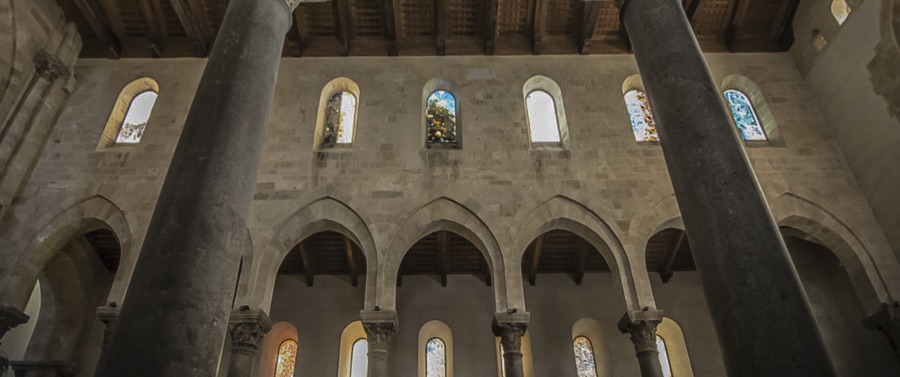In every corner of the Temple, we bear witness to an intimate dialogue between religion and architecture pervaded by alternating colours that blend together, giving only an apparent sense of homogeneity.
The stained-glass windows made in the early 1990s by the Palermo artist
Michele Canzoneri
, capture our attention, sending us back in time with the
narration of biblical themes
. Artistically decorated transparent panels were inserted in the
splayed single-lancet windows
of the naves and in the large window of the façade. Consisting of a combination of various forms of blown glass, in turn enriched with acrylic pigments, they replaced the previous non-valuable fixtures, from ancient lead sheets to more recent ones made of wooden material. Looking up from the aisles is a mystical path, which elevates us towards an intimate link with the Word of God. It begins with the fourteen pointed windows overlooking the central nave, with seven windows on each side, symbolically referring to the days of the Creation. The theme presented in the side aisles is echoed in the rich and vibrant narrative rhythm of the nine representations on each of the single-lancet windows on the walls. The Cathedral, which had remained unfinished over the centuries, was brought back to life with atmospheres typical of medieval construction sites, during the major
restoration
project opened in the 1980s.